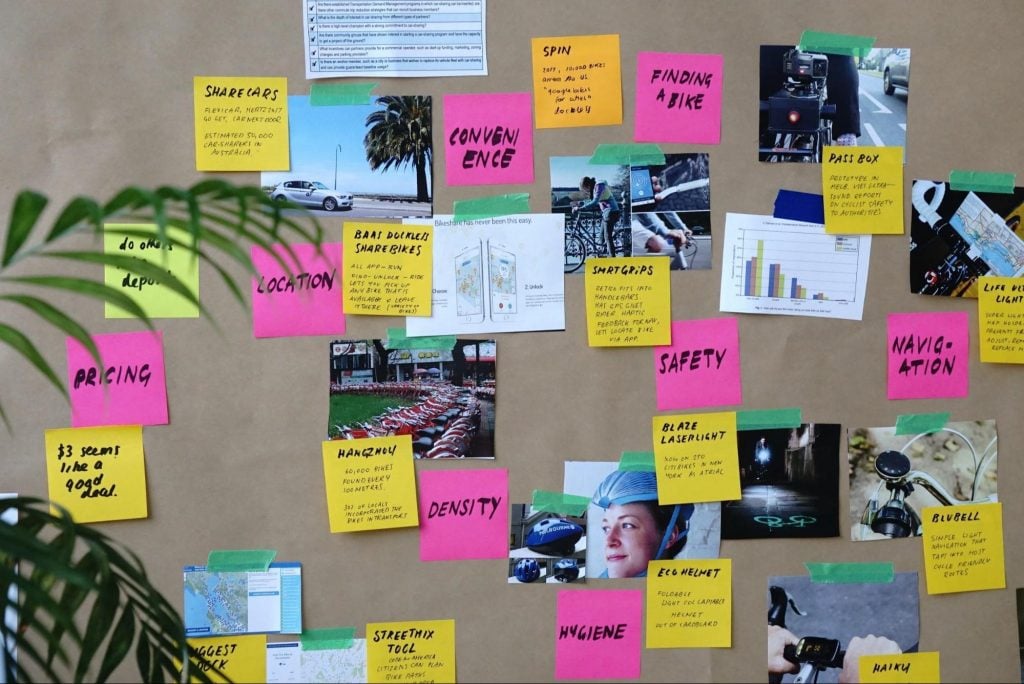How to Start an Online Business in 2020 [A Complete Guide]
There’s a question I’ve been asking myself recently:
Can I become one of those who earns money online, not just pays for things?
And how to make money fast if I don’t have any experience in any business whatsoever?
That’s two questions, actually. I hope that by the end of this article you and I will be able to answer them both.
Table of Contents
- Turn a problem into a business opportunity
- Get to Know Your Target Audience, Study Their Behaviour, Try to Get Into Their Heads
- Define Your Target Audience by Demographics
- Stalk Your Potential Customers Online
- Do a Keyword Research on Your Niche
- Interview One or Two Representatives of Your Target Audience About Their Problems and Desires
- Write Down Your Business Idea, and Create Prototypes
- Ask Open-Ended Questions and Encourage Them to Elaborate on Their Answers
- Analyze the Answers
- Get Disillusioned to Succeed
- Study Your Competitors, Learn From Their Successes and Mistakes
- Identify the Main Players in Your Niche
- Ask Yourself the Big Question: How Can I Offer People Something More Valuable Than What Already Exists on the Market?
- Ask Yourself: How Can I Make People Know About My Offer?
- Follow Your Competitors on Social Media
- Get Inspired by Their Content Marketing and Customer Service
- Learn to Respect Your Competitors
- Create a Website for Your Online Business
- Choose a Type of Online Business and Get Started
- How Not to Fail
Step 1. Turn a problem into a business opportunity
I’ve made a video playlist of successful online entrepreneurs teaching us how an ordinary guy or girl can start making money online and not go broke in the first year.
They say it’s possible, let’s check out:
Teaching a STUDENT How to Start a Business with $100!
How To Create An Online Business That Makes Money 24/7
Inspired as I usually am after watching such videos, I want to talk about the steps every entrepreneur should take to come up a viable startup idea.
1.1 Describe Your Skills and Ambitions
- What are the industries you’ve worked and feel competent in?
- What are the “hardest” skills you’ve developed throughout your career life? What are your best developed soft skills?
- In what spheres do your friends usually ask your advice?
- What are the things you wouldn’t mind to be doing on a Saturday morning except for resting and hanging out?
- Look at your Facebook feed, ebook library, and email subscriptions - what do you read about?
- What are the things you can do in a very special way, like nobody else?
- What are your biggest successes, professional and personal achievements you are most proud of?
- How much income do you need to earn to feel comfortable and content?
- How many hour do you want to work every day? Or maybe you want to have a passive income?
- Are you a loner or do you prefer active teamwork? In office or remotely?
1.2 Think about Your Dream Product or Service
- Ask as many people as you can what dream product or service would they would buy without hesitating for a minute. Don’t be lazy, talk to people. Make sure you don’t limit your survey to your closest friends and relatives, seek hints from people you would like to be your future clients!
- Also ask people what information they’ve been looking for and couldn’t find for a long time.
- Look at your favourite product and services. What are the things you use most often and with most pleasure?
- When it comes to your favourite products, services or go-to resources? What features do they lack to become absolutely perfect? Can they be modified or improved?
- What are the latest trends in big industries that you are aware of? What new technologies are on the rise?
After you’ve come up with a list of products or ideas, test each of them with Google keyword planner. You need to know how many people in the world are actually searching for these things online and which word combinations they are using.
1.3 Find Out Where Your Skills and Desired Intersect with the Market Demand
There will be no easy answers or everyone would have been successful businessmen by now. Get creative and give yourself a chance!

1.4 Try to Strike Balance Between Your Dream Business and Reality
Many aspiring entrepreneurs get caught in the conflict between their personal values and other people’s needs. You cannot simply follow your passion and expect that others will support you with dollars. We will discuss how you get to know the real pains and needs of your target audience in the next paragraphs.
On the other hand, if you choose to do something that makes you bored and miserable, your motivation will fade out too early. Many successful businessmen confess that they would have quit long before the first results if they weren’t having fun working on their startups. How to strike balance between your personal aspirations and reality? I believe that this the main challenge for every aspiring entrepreneur. What do you think?
Some people never launch their businesses, afraid that no one will buy their product. They wait too long and waste money adding a bunch of unnecessary features. To become a success, your product, service, or blog, should address one major customer pain point but do it beautifully.
Speaking of bloggers, many newbies are so busy creating pillar content and gathering their audience that they forget about monetization and never offer any products to their readers. Remember, you don’t need a blog for a blog’s sake, you need a business.
Also, make sure your niche is not too broad. If you don’t have an enormous startup budget, you will need to focus on solving one particular problem but doing it better than others. For example, if you choose to go into drop shipping, don’t try to become the next Amazon and sell everything from socks to TV sets. You won’t be able to compete with such giants.
It is a bad sign if you cannot find successful products that are similar to yours in the niche of your choice. You won’t have any competitors, but what if the market is dead because you are solving the problem no one cares about? It’s best to choose a niche where there are several other players with differentiated products, so you can compete and bring something new to the table.
You are creating an online business, so make sure your niche allows for buying or selling online or doing affiliate marketing, or generating much traffic and earning from ads, etc.
1.5 What’s an Online Business and Who Can Succeed in it?

Online business means selling goods or providing services solely via the Internet.
How is it different from other types of business?
- It allows to cut rent and payroll costs
- It is much more flexible in terms of product and its delivery
- It can be accessible 24/7 all over the world
People say that starting an online business always requires profound computer skills and deep knowledge of marketing. Real-life stories prove that there are exceptions to this rule.
Pete Cashmore is 32 now, but his online empire was born when he was 19 in his parents’ apartment. Pete started mashable.com mashable.com for fun, he wanted to blog about entertainment, web tools, and social networks.With time, Mashable made him one of the wealthiest scots in the world. Pete was even included into the list of most influential people according to Time magazine in 2012. Despite having its ups and downs, this year, Mashable was sold for £37 million. In its golden days, the platform had 45 million unique monthly visitors and 27 million social media followers. Not bad for a media startup started by a college boy from a small town?
Here’s one more example of a multimillion online business started from nothing except talent and dedication:
Dan Middleton (DanTDM), the richest youtuber of 2017, created his channel as a teenager while working in Tesco. He started uploading Minecraft videos and has since had a sold-out global tour. In 2017, Dan’s online business has earned him £12.3m. This success is not accidental because the blogger has already uploaded 2,800 videos which he created himself. 16 million Z-generation subscribers adore him for his humor, storytelling talent and, of course, beautiful british accent.
Meanwhile, let’s have a look at another real-life online startup. This one didn’t end up a sale to Microsoft or Google, unfortunately it failed.
Chengeer Lee created labit.io to help researchers create websites for their laboratories. It never worked out. In his blog on Medium, Chengeer Lee explores the main reasons behind this failure: choosing the wrong cofounder, putting to little emphasis on innovation and uniqueness, ignoring the inertia of the target audience, not validating the idea properly, launching too late, etc.
Looking back, Chengeer Lee concludes that a successful online business should start with a Minimal Viable Product. This is a product that is just enough to prove the concept and satisfy the targeted customer’s need. Nothing more.
Do you agree? Check out his full story in the article What I learned from my failed startup and share your thoughts in the comments to this article.
How do you think, makes a good startup or successful internet business? Is minimal viable product enough or should we strive for perfection? Tell us in the comments!

Meanwhile, let’s compare the following stories in terms of the viability of their business ideas.
“A how-to guide for everything”, Wikihow, tops the list of the private websites that earn most from Adsense. The website brings Jack Herricks $2 million per month from ads. Wikihow’s content is published in 17 languages and placed under a Creative Commons license. While the company has less than 25 employees, 15 m unique visitors read its content every month.
How’s that for a viable idea, what do you think?And the next one...
In 2013, Pardeep Goyal left his corporate job launched an educational software startup together with his brother-in-law. He confesses that they expected they could “build any product for schools and make big profits”. They invested personal money, rented an office, got a team n board, and developed a product. Unfortunately, no one wanted to purchase their ERP software even though the product had all the necessary features and the price was competitive.
Looking back, Pardeep Goyal admits that they have created a product based on assumption, didn’t address customer pain points while selling the product, made too many unnecessary expenses, and postponed tough decisions. Read the full article How We Lost Rs 15,00,000 in My First Startup.
It would be unwise to compare most successful businesses with failed startups without mentioning the survival bias.
We all have heard the sad statistic that 9 out of 10 startups don’t work out. By the way, this number doesn’t include those businesses that didn’t fail because they weren’t even launched. And when we read the stories of the winners and try to follow their recommendations, we may forget that their tips will not necessarily work for everybody.
So, if you want to read more stories about startups that didn’t survive and learn from their mistakes, here’s a wonderful resource for you.
Step 2. Get to Know Your Target Audience, Study Their Behaviour, Try to Get Into Their Heads

2.1 Define Your Target Audience by Demographics
- Age
- Location
- Income
- Marital or family status
- Occupation
- Ethnicity
- Personality
- Attitudes
- Values
- Interests
- Lifestyle
2.2 Stalk Your Potential Customers Online
Watch what they watch, read what they read, participate in communities and online conversations, listen. This tip is especially relevant to future bloggers because the content of your blog should be speaking the language of your audience. And you need to learn it first.
2.3 Do a Keyword Research on Your Niche
Keywords illustrate what people want better than anything else.
2.4 Interview One or Two Representatives of Your Target Audience About Their Problems and Desires
Ask what they think about your business idea. Don’t be afraid to ask too many questions and pay attention to the answers you get.
2.5 Write Down Your Business Idea, and Create Prototypes
By prototypes I mean sample ads, or pieces of content and show them to people who belong to your target audience.
Ask for feedback before spending any money. At this stage, you should be adjusting your business idea to reality.
2.6 Ask Open-Ended Questions and Encourage Them to Elaborate on Their Answers
The more information you get, the better.
2.7 Analyze the Answers
- What is it that people don’t understandabout my idea/product/service/content?
- What level of knowledge and technical skills does my target audience have and is my product/service/content adequate to it?
- What causes idea/product/service/content causes my future audience say ”WOW” and how can I capitalize on this?
2.8 Get Disillusioned to Succeed
You may have heard already that many marketers and businessmen failed because they had created products for themselves, not for clients. Thinking like your customers doesn’t come in a day, you need to spend time taking in their values and attitudes. By doing so, you’ll be able not only to create an amazing product, but find the smartest ways to promote and market your business.
Use Facebook group search to find communities relevant to your niche and join them, apply advanced search tool advanced search tool on Twitter, and follow anyone who looks like your potential client (don’t forget to set the right geographic parameters and demographics). If you’re into B2B, don’t forget about Linkedin.
Some businesses need to set more than one target audience because different groups of customers will have different goals with regard to their product. If this is the case, you can focus your marketing on the biggest and most promising group of customers. Or else, you can try to find where these groups intersect and try to produce one-size-fits-all solutions. The second approach seems better to me. What do you think?
When you’re done researching your audience, here are the most harmful assumptions you need to prove wrong:
- Your future customers or readers are just like you.
No they aren’t. - All your customers or readers have the same technical background, know the same things, and understand the same jargon.
No they don’t. - Your customers or readers will fall in love with your idea immediately.
It may happen but you shouldn’t rely on this too much
Step 3. Study Your Competitors, Learn From Their Successes and Mistakes

3.1 Identify the Main Players in Your Niche
Google your main keywords and keyword combinations once again and see what pops up. Also, look at the ads and click through them.
There are three levels of competition in any niche - direct, indirect, and substitute.
- Direct competitors are your main rivals, and you should spend most of your time studying them. They offer very similar products and services to yours, so customers will have to make either/or decisions.
- Indirect competitors sell very different products or services, so you don’t have to worry about them until (if ever) they become direct ones.
- Substitute competitors are more dangerous because they offer products similar or alternative to yours but in different industries. You need to keep an eye on them too.
3.2 Ask Yourself the Big Question: How Can I Offer People Something More Valuable Than What Already Exists on the Market?
You’ve learned a lot about your target audience and their needs in the previous section, so now it’s time to use that knowledge. Look at the competition in your niche and try to identify weak spots and opportunity gaps in what they are doing.
3.3 Ask Yourself: How Can I Make People Know About My Offer?
Here you need to get a general idea of how your competitors market themselves. To do that, you will analyze their websites.
- Use Alexa to get a general idea about the traffic dynamics of your competitors’ websites.
- Use Google Trends - to see traffic volume, location of visitors, most relevant keywords, and related websites.
- Use SEMRush to get keyword value and keyword volume analises.
- Use Ahrefs to know more about their backlink strategy.
3.4 Follow Your Competitors on Social Media
Read what they post and what responses they get. Also, don’t forget to subscribe to their blog! Read what you can find about them, including customer reviews and gossips.
3.5 Get Inspired by Their Content Marketing and Customer Service
What are they talking about with their audiences? How do they do it?
You can use these ideas to create your content. Learn from the way they are responding to comments and creating discussion around their products.
Successful online businesses use different channels to promote their brand, but use strategies that integrate their activities on separate platforms together. Content marketing and social media marketing go hand-in-hand to attract users into clicking through to a business’ official website. In between image and video shares, social media posts can be used to regularly promote links to a business’ content marketing efforts, such as blogs, ebooks, and whitepapers.
Schedule set times and days per week to promote your content and examine your impressions and engagement rates per month to see if you need to tweak your plans. Remember: testing multiple options is key to finding the right time and place for your brand’s posts. As one of key strategies to build your brand online, this works for businesses in all kinds of industries.
Tips for content cross-promotion on social media:
- Twitter: Schedule re-shares of the same link using different captions in between the rest of your daily tweets to make sure followers don’t miss out. Share the link throughout the rest of the week as well until you have something new to promote.
- Facebook: Pin your most popular shares to the top of your page so it’s the first thing fans see. Use the official page to engage with users who comment on your link shares.
- Instagram: Easily create engaging images for your blog posts or website pages using an image editing app like InstaSize to add borders and text. Place a good quote or the title of your post onto the image and add an extended preview in the caption along with a call-to-action phrase directing users to visit your site.
- LinkedIn: Establish thought leadership by having your blog contributors or upper management cross-post blog entries onto their personal LinkedIn Pulse pages. Include a link to the blog and company website in the posts themselves.
3.6 Learn to Respect Your Competitors
Successful businesses respect their competition. It means that there’s always much you can learn from other market players - both how to do things and how not to do things.
However, please don’t copy or plagiarize anything. You may apply some of their ideas and strategies to your unique goals and brand values. If you do everything just like everybody else, there’s no way you can beat them.
You can use an updated SWOS model in your analysis. It consists of the following points:
- Strength - What is the basic value they deliver? What are the main benefits of their brand?
- Weaknesses - Basically, these are the things you will do better than them.
- Objectives - What are their marketing goals and priorities?
- Strategies - What advertising or PR methods do they employ to achieve their goals?
- On which platforms are they present? Which do they use most actively?
- How often and what do they post? Are their content original? Do they use illustrations?
- How active are their followers? Which posts get most comments and appreciations?
- What are the methods they use to get new followers and increase engagement?
Step 4. Create a Website for Your Online Business

4.1 Get Clear About Your Goals and Expectations
If you need a website for starting an online business of any type, there are basic characteristics it should have:
- It should look professional and unique
- It should provide good UX
- It should be fast, responsive, secure, and GDPR compliant
- It should be cleanly coded and SEO-optimized
- It should provide payment options if you business needs them
- It should be easy to operate and customize whenever you need to do it
| Custom Website | CMS Template | |
| Advantages |
|
|
| Disadvantages |
|
|
| Conclusion | Smaller online businesses simply do not need all the advantages that custom websites provide. Using a good template is the best option for those starting a new business. | |
4.2 Choose the Most Appropriate Content Management System
Let’s compare three most popular CMSs.
| WordPress | Joomla | Drupal | |
| Open source platforms based on PHP and MySQL operating under GPL. All three have big communities of developers and a great number of themes on sale. | |||
| Market Share | 58.9% | 7.0% | 4.7% |
| Time | Installation up to 5 minutes | ||
The full launch takes 36 hours on average
Many thousands of paid themes by various providers.
Many hundreds of themes available for sale.
Many themes and plugins available but lower plugin compatibility
As you probably see from the comparison, creating a site with a WordPress theme will is the best option for a newly-launched online business.
4.3 Come up With a Name for Your Business and Website
There are some general rules to choosing names for businesses and websites (of course, you can get creative and break any of them):
- Make it short and catchy.
- Choose a descriptive name, it should tell at least something about your business.
- Make sure it is scalable and will still be appropriate if you choose to expand your business.
- Create something original, don’t copy from anyone.
- Always test your ideas on your target audience, show your new name to someone of them and make sure it is easy to spell and remember.
- Check whether your domain name is still available.
4.4 Choose a Theme for Your Future Website
In order to choose the most appropriate template for your online business website, pay attention to the following elements:
- Full width or boxed- width content
- Navigation and UX
- Logo placement
- Header layout
- Clean code
- Loading speed
- Responsiveness and cross-browser compatibility
- SEO
- Ease of customization
- Support and documentation
4.5 Hire a Web Designer, Web Studio or Choose a Good Website Builder
| Website Builder | Web Designer | |
| Advantages |
|
There are things that a website builder cannot do but a web designer can:
These are mostly SEO-related issues that require attention from an experienced web designer. |
| Disadvantages |
|
|
| Most often used by | Startupers, hobbyists, bloggers, non-profits, entrepreneurs | Established highly profitable businesses and entrepreneurs, businesses in very competitive niches, e-commerce businesses |
Starting A Website: What Options Do You Have? [Free Ebook]
By clicking the button you agree to the Privacy Policy and Terms and Conditions.
Step 5. Choose a Type of Online Business and Get Started
Now that you know what you want to start doing, let’s get even more practical.
In this section, I’m exploring the most popular types of online business and how to start them.

5.1 Drop Shipping
Drop shippers act as retailers for goods they buy from suppliers. They buy these products immediately upon receiving an order from a customer.
So, as a drop shipper, you will be selling and marketing products under your brand name and handle all customer relations. A supplier will produce and ship goods on your behalf to customers. Suppliers handly the risks of not selling what they have produced. You, as a dropshipper, will risk your reputation and handle complaints if the goods are of low quality.
Let’s look at the advantages and disadvantages of drop-shipping for someone who starts a new business.
| + | - |
| Low costs - you will not produce anything, so this business doesn’t require significant investments. | Limited control over quality - you will do your best to select a reliable supplier, but you will have no control over what they will be shipping to your clients. If something goes wrong, you will be responsible. |
| No inventory - you don’t have to keep products in stock and pay for storage. | Harder to compete in terms of price - you will not be able to buy from your suppliers in bulk, so your price won’t be as competitive as it could have been. |
| Lower risks - you don’t buy anything until you receive an order from a customer. In fact, this process can be fully automated and risk-proof. | Backordering - there may be times when the products you get orders for will be out of stock with the supplier. You cannot control this. |
| No shipping - you will not have to take care of any logistics. | High competition - this type of business is relatively easy, with low entry barriers, so the competition will be high. |
How to start a drop shipping business
STEP 1. After you’ve chosen a niche, do a supplier research and choose the best products and partners.
STEP 2. Register your business
STEP 3. Choose a platform after comparing the most popular ones. TemplateMonster Affiliate Program 2.0: Meet New Terms & Join Us!
STEP 4. Do your marketing:
- Make sure your website contains testimonials, product ratings, and reviews
- Run remarketing campaigns on social media
- Invest in Google ads Google ads
- Add a subscription form to your website, make an email list and use email marketing
- Create webinars and other lead magnets
- Create unboxing or instructional videos and promote them on Youtube
- For organic traffic, start a blog and participate in online communities where your target audience hangs out
- Promote your products on social media
- Use cross selling and upselling techniques with your customers
Read More
What CMS Should You Pick for Your Dropshipping Business?
How to Drive Traffic to Your New Website? A Comprehensive Guide
5.2 Affiliate Marketing

Affiliate marketers recommend products and services offered by other companies to potential clients for a commision. Most affiliates are website owners who want to earn some additional income by including links to relevant products into their content, promoting it through their channels, and placing affiliate ads on the sidebars.
With affiliate marketing you may be choosing between four main commision types:
- Cost Per Lead (CPL) - you get paid for filled out contact forms
- Cost Per Action (CPA) - you get paid for some actions like downloads
- Cost Per Click (CPC) - you get paid for the clicks on your website
- Cost Per Sale (CPS) - you get paid for the actual sales
Let’s do a PRO/CONS analysis of Affiliate marketing
| + | - |
| Low entry barriers - no special marketing or technical knowledge required | You don’t set the rules of the program |
| If you already have a website or blog, you will join an affiliate marketing program for free | At first, your income may be low |
| Low risks, you are only responsible for marketing | Competition is massive |
| Once everything is put in place, the income you get is mostly passive | There’s a risk of fraud when links get stolen |
How to start out in affiliate marketing?
STEP 1. Choose a niche and start a website and create landing pages.
To join an affiliate program, you need a website filled with content that is relevant to your niche and establishes you as an influencer. Move to the Section 4 to find out how to create a website.
STEP 2. Research and choose an affiliate program.
There are dozens of platforms that provide affiliate opportunities. The classic examples are:
STEP 3. Create awesome content and add affiliate links into it.
Traditional types of content for affiliate marketing include:
- Time-based and event based blog posts
- Evergreen educational or entertaining articles
- Roundup and Best-of posts
- Product comparisons and reviews
- How-to and unboxing videos
Every post should include:
- A good headline
- Personal and thoughtful introduction
- Powerful product descriptions that focus on the solutions that these product provide for customers’ needs
- Calls to action
Make sure you also follow the main principles of good content:
- Be authentic and personal, not salesy
- The main focus of your content should be on things that readers care about
- Be responsible and truthful in your statements about the products
- Incorporate product descriptions into stories
- Include many original photos and videos
STEP 4. Place banner ads on the sidebars of your website but don’t overdo them.
Too many ads with too little content on your website will lead to lowering your Google search rank.
You will easily get all you need to create powerful visual ads from your affiliate program provider
STEP 5. Advertise on social media
Read More
The Best Affiliate Plugins That Will Speed Your Affiliate Website
Convert Traffic into Your Affiliate Commission with Featured Templates WordPress Plugin
Top 5 Best Web Design Affiliate Programs
Top 3 TemplateMonster Affiliate Tools for Local Partners
How to Build an Amazon Affiliate Store Using WordPress
5.3 Blogging

Full-time blogging has become a popular career option for people who enjoy writing and communicating on social media. By running a blog you can generate traffic and create a community. As a blogger, you will start earning money from running ads, affiliate marketing, or selling something directly to your readers.
| + | - |
| Easy to start | You will have to post consistently and keep your WordPress blog theme updated |
| A good way of expressing yourself | There may be technical issues with the website |
| You can build a community around your blog and get to know other authors | Gathering a big enough audience and earning from the blog takes time and effort |
| A blog is an excellent platform for monetization and earning passive income | People can give you negative feedback or even try to assault your reputation online |
How to start a blog?
STEP 1. Choose a niche and move on to creating a website
STEP 2. Create awesome content content
Use a simple 5-step process to create very successful blog posts very successful blog posts:
- Choose a topic, do a small research on it, write a post outline
- Find a way to validate your the topic of your next big post with your target audience and make sure people care about it
- Make a headline that is both catchy and informative
- Add personal and storytelling elements to your posts
- Add a few jokes and original pictures
- Link out to explain difficult terms and add more value
- Link to other relevant articles on your blog
- Add calls to action
- Proofread! Then profread again
Use these resources to add flavour to your content:
- Giphy
- Canva
- Meme Generator
- Infographic directories
STEP 3. Add a subscription form to your website, capitalize on email marketing.
STEP 4. Create lead magnets and promote them.
Make sure your lead magnet contains the following key elements:
- Something of value you give people in return for their email address or contact information
- You should explain for whom you’ve created this magnet and make sure it reaches the right people
- Checklist of key points
- Summary
- Call to action
Most popular types of lead magnets are:
- Video series
- Checklist
- Blog post takeaway
- Ebook
- Discount or promo code
STEP 6. Sell your products or services through the blog:
- Create a funnel for your own products
- Publish sponsored content
- Become a freelance blog writer, and market your services
STEP 8. Promote your blog on Google and social media using a powerful set of tactics.
Most web owners want to start earning money for placing ads on their sites:
- AdSense CPM means that you will get paid for a thousand of impressions (and ad being viewed);
- CPC is more popular because advertisers prefer to pay when the particular ad is effective and actually gets clicked on;
- CPM is the synthesis of the two, your income will depend on how many times people clicked on the ads they saw on your website (based on the number of clicks/number of impressions ratio);
- With CPA, advertisers pay only when visitors perform desirable activity like filling out a form or even making a purchase.
Read More
How to Launch a WordPress Blog. Quickly and Easily [Free E-Book]
100 Best Free & Premium WordPress Blog Themes for 2020
15 Must-Have Free Blogging Tools Every Pro Blogger Should Use
5 Reasons Why Blogging Is Necessary For an E-Commerce Site
WordPress Blog Monetization: How Website Owners Become Rich
Top-20 Personal Blog WordPress Themes In 2020

5.4 Earning with Google AdSense

| + | - |
| It’s an easy way to get a passive income if you already have a popular website or channel | Your account can be closed any moment if Google doesn't like what you post |
| Ads are customizable, you can experiment with their placement and get a little creative | Too many ads will make your website look cheap, and your readers may leave |
| You can earn from ads on different websites | Ironically, you will get paid for people leaving your website when they click on ads |
| You will use powerful statistics tools and keep track of your visitors and profits | If you don’t have much traffic, you will not earn much |
If you already have a website or you publish popular videos on youtube, you can earn a few bucks for displaying contextual ads.
How to make money with Google Adsense?
STEP 1. Create a blog or a website, run it for at least 3 months to gain some traffic, fill it with good text-rich content.
STEP 2. Create an AdSense account, fill in an application and get approved.
STEP 3. Choose the ad size and type:
- Text ads - set the box color, text, and links
- Images: set the size and add some copy to it if necessary
- Audio
- Video
- Flash
- HTML
STEP 4. Follow the guidelines and respond to emails and complains from Google (if any).
STEP 5. Post consistently and make sure your content drives targeted traffic.
STEP 6. Use smart SEO, paid ads, and organic methods to promote your website
STEP 7. Test all your ad types and placements to get better results.
Read More
How to Create a Website and Make Money in 2018
Best Optimized Google AdSense Themes for WordPress
How To Maximize Your Adsense Earnings With Smart Optimization
3 Types of Sites That Have Quality AdSense Revenue
How to Earn Money Through Google Adsense
5.5 Making Money on Youtube

| + | - |
| Videos go viral faster, so it’s easy to get more subscribers | Creating good videos may require more effort and technical skills than writing text content |
| Videos are very engaging, so people tend to stay on the channel | More equipment required to shoot good videos |
| It is easy for a good video to rank high in a search engine | You need to both look and sound good to create videos that people will like. All other bloggers don’t have to pay attention to pronunciation |
| It’s fun! | Unlike writing blog posts, creating quality videos requires initial investments |
STEP 1. Create an account on Youtube Create an account on Youtube
- Sign in and set up your channel
- Move on to enable monetizationfor your new vlog
- Connect an AdSense account
STEP 2. Create a viral video :
- Try to make videos that contain something valuable so that people will want to share them
- Team up with other youtube creators to make videos and promote them together
- Upload regularly and make sure your every video has a powerful message packed in a good story
- Use the best camera you can get (it doesn’t have to be professional), take good care of the lighting and background
- Edit out all awkward moments
STEP 3. Submit your video for revenue sharing
STEP 4. Optimize your video channel:
- Encourage viewers to subscribe and comment
- Add a channel trailer and create playlists
- Cross-promote the video through all your social media channels
- Embed your videos into a posts on your blog
STEP 5. Add different types of content:
- Product review videos
- How-to videos
- Regular personal vlogs
- Haul videos
- Gaming streams
- Comedy videos
STEP 6. Use alternative ways to make money on Youtube:
- Join an affiliate program
- Promote and sell products or services on your channel
- Sell digital products, webinars, or subscriptions
- Partner with a brand and create sponsored videos
- Offer paid lessons, consultations, or memberships
Read Also
How Can A YouTube Video Blogger Earn with TemplateMonster Affiliate Program?
SEO YouTube: How to Find the Best Keywords
Promote Your Business On YouTube in 7 Steps
The 5 Types of YouTube Videos You Need to Make For Your Online Store
How Not to Fail

So, guys, I guess it’s been a long and difficult read. Are you ready to start an online business? Have you learnt what to do? Make sure you live a comment and let me know what you think!
I’ve described the main things you should do to succeed in online business. In conclusion, I want to give a list DON’Ts that will guide you on your way to big profits:
- Don’t give up if success doesn’t come overnight
- Don’t take actions without seeing the big picture and having a good plan
- Don’t stop learning as you go
- Don’t learn from successes only, study other people’s failures
- Don’t lose discipline or neglect systematic action
- And don’t forget to have fun!
If you found this article useful, please give me your feedback in the comments!
Read Also
Tips and Tricks for Setting Up an Online Business Using WordPress
Top 45 Ecommerce Business Ideas for 2018
5 Proven Ways to Market Your Startup Online
How to Start Travel Business in One Day With Tourism Website?
80 Small Business Ideas [July 2018]
Don’t miss out these all-time favourites
- The best hosting for a WordPress website. Tap our link to get the best price on the market with 82% off. If HostPapa didn’t impress you check out other alternatives.
- Website Installation service - to get your template up and running within just 6 hours without hassle. No minute is wasted and the work is going.
- ONE Membership - to download unlimited number of WordPress themes, plugins, ppt and other products within one license. Since bigger is always better.
- Ready-to-Use Website service is the ultimate solution that includes full template installation & configuration, content integration, implementation of must-have plugins, security features and Extended on-page SEO optimization. A team of developers will do all the work for you.
- Must-Have WordPress Plugins - to get the most essential plugins for your website in one bundle. All plugins will be installed, activated and checked for proper functioning.
- Finest Stock Images for Websites - to create amazing visuals. You’ll get access to Depositphotos.com to choose 15 images with unlimited topic and size selection.
- SSL Certificate Creation service - to get the absolute trust of your website visitors. Comodo Certificate is the most reliable https protocol that ensures users data safety against cyber attacks.
- Website speed optimization service - to increase UX of your site and get a better Google PageSpeed score.
Get more to your email
Subscribe to our newsletter and access exclusive content and offers available only to MonsterPost subscribers.

Leave a Reply
You must be logged in to post a comment.